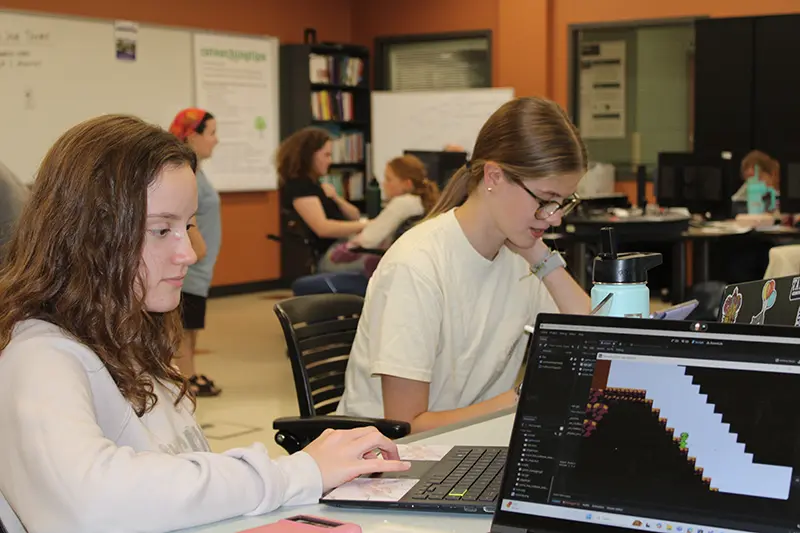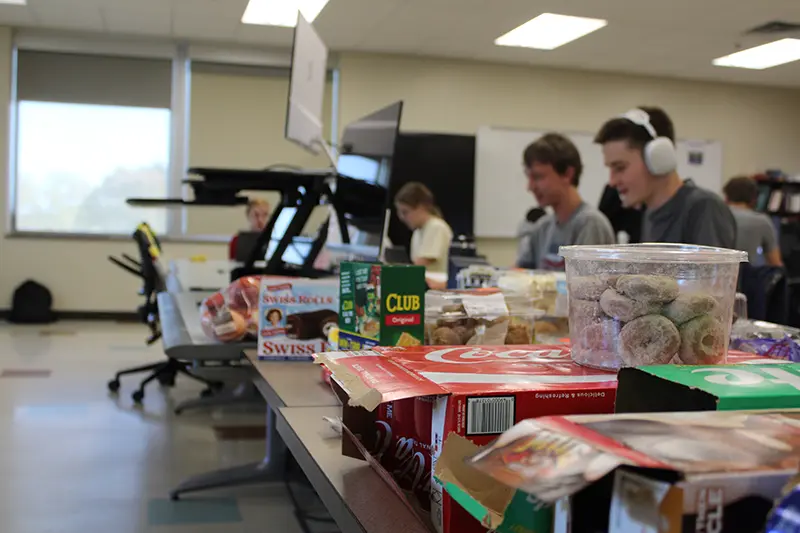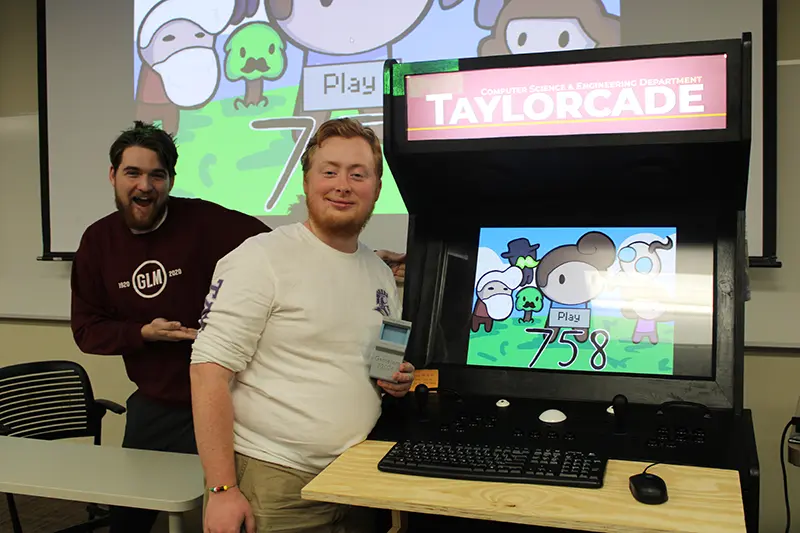-
-
- Financial Aid
- Financial Aid
- Scholarships
- Loans
- Grants
- Federal Work Study
- Additional Resources
-

Once every semester, the Taylor University's Computer Science & Engineering (CSE) GameJam event brings people with a variety of skills together through their shared love of video games. This hectic three-day event challenges programmers, artists, and writers to work together to create a video game from scratch in just over 24 hours. This semester, 23 students across 10 teams competed from April 24-26.
"Game jam” is a common term for an event where participants attempt to create a video game from scratch in a short time frame. A typical game jam lasts anywhere from 24 hours to a week.
Jon Denning, Department Chair and Associate Professor of Computer Science & Engineering, organizes the event. He chooses the date, brings snacks, and helps students with their code. He invites anyone interested to participate, regardless of their major or level of programming skills. Participating is completely free, and for CSE majors, GameJam counts towards sanctioned event credits.
“You spend about 16 hours just working on creating a game,” said sophomore Computer Science-Digital Media/Systems major Riana Schultz. In reflecting on her team’s third place win during the Fall 2024 GameJam, she shared, “I had never made a game before, but I had fun working with my team and competing against other people. It was cool to try something new, and I learned a lot.”
Teams range anywhere from solo developers to large teams of six or more members. Teams are only allowed two programmers but can have as many artists, writers, musicians, or other creatives as they want.
GameJam began with a “soft start” on Thursday at 6 pm, where participants attended a meeting to vote on a theme and began brainstorming ideas for their own games. No coding was allowed until the next day, but competitors could begin creating any non-code assets such as art, music, and dialogue.

At 6 pm on Friday, competitors gathered in Euler Science Complex on campus to begin coding their projects, fueled by soft drinks and mini donuts. Lots of them stayed until Euler closed at midnight, at which point they went back to their residence halls to get some sleep and prepare for the next day.
Saturday began the real grind. Participants typically work on their game all day, starting at 8 or 9 am and aiming to have a working game by 5 pm, when student playtesters come provide feedback. Submissions closed at 9:30 pm, and the presentations and judging began at 10 pm. The judging criteria included: interaction with GameJam theme, enjoyment of playing, completeness of game with proper user interface, novel visuals, novel audio, arcade feel, iterative design that incorporates playtesting, and implementation difficulty.
This year, Computer Science senior Jacob Stetka won first place with his game Ghlobot Shift. Second place went to Something Fishy by Computer Science-Digital Media/Systems sophomore Noah Wills, and third place was awarded to Multidimensional Prom Night by Computer Science seniors Dawson Ochs and Caleb Ranzau.
GameJam started in 2014, when students approached Denning about the possibility of a coding contest. It was a success, and there has been a GameJam every semester since.
In the fall of 2023, Denning built the Taylorcade, an arcade machine made specifically to enable any student to play completed GameJam games. The Taylorcade is housed on campus, loaded with games from previous competitions. Any student can approach it and choose a game to play. Some highlights include Luminosity, 758, and Critter Clamber.

Over the years, dozens of students have participated in GameJam, and not just CSE majors. The competition draws people from any major who want to hone their skills in the intense but creative environment of GameJam. Art, writing, and music majors have helped in past years to create games with original, student-made content.
“Over the years, the games have only gotten better,” Denning said. He explained that students usually figure out by their second or third GameJam how to make a quality game within such a short time frame. He also said that younger students have been participating, which means they have more Jams to learn from.
Photos provided by Jane Aubry Page